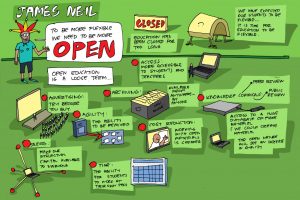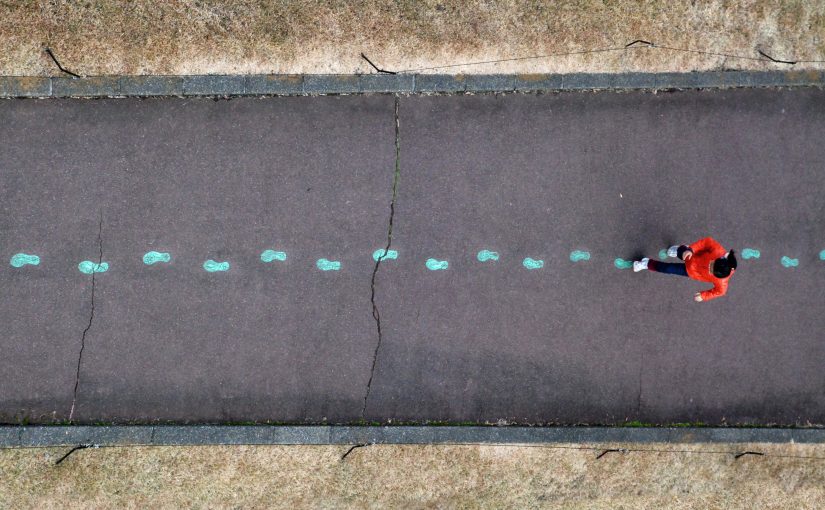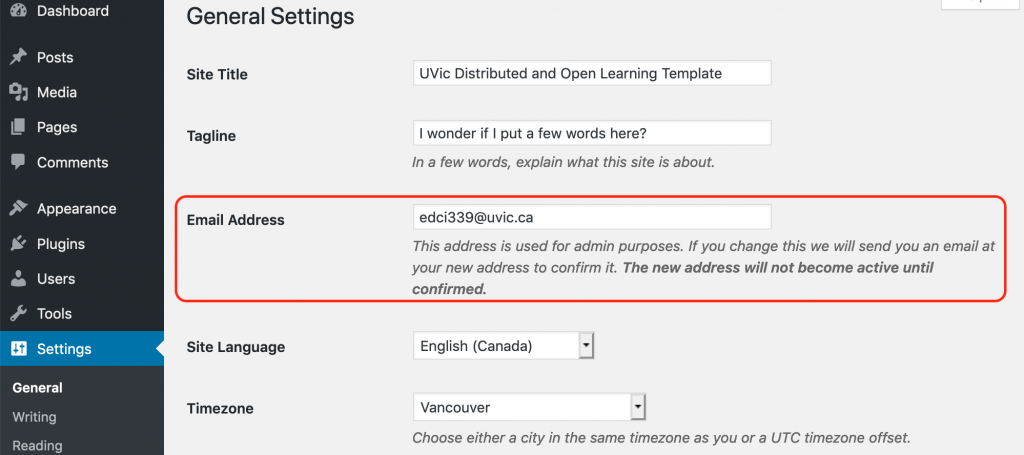The problem of online education
Education is a problem that the world has attached great importance too since ancient times. Therefore, the education industry is also a traditional industry. However, with the development of network technology, education is no longer limited to the opposite education. The emergence of online live education has made the distance between famous teachers and students close, which not only stimulates the development of science and technology education but also spreads the knowledge of education.
Online education is not limited by time and space. Students can learn anytime and anywhere. Which course to take to learn which course is sufficient to fully satisfy the busy schedule of working people and the time of learning is not fixed. Online education is generally combined with online tutoring and face-to-face tutoring, online tutoring and learning through students and teachers. At the same time, it can communicate, answer questions, complete homework, exams, etc. through the platform, and pay more attention to the traditional teaching model. The initiative of students and the interaction between education and students, students and students have tightened the psychological distance between teachers and students and increased the opportunities and scope of communication between teachers and students. (De, 2018)
Network education uses computer network-specific database management and two-way interactive functions to enable the system to achieve complete system tracking records for each student’s data, learning process and stage conditions, and to propose different personalized learning suggestions based on different students’ data. Planning is more conducive to the development of students. (Norman, 2017)
The online education teaching platform has automatic management and remote interactive processing functions. The students in the distance can do consultations, registration, payment, course selection, inquiry, student status management, homework and test management, etc. through the network education platform of the college. From consulting to final graduation, the entire process has a special management system to automatically handle, to make up for the shortcomings of large manual operations. (Norman, 2017)
And right now there is three most popular mode that used in online education. First, recording course mode. The earliest form of online education is the recording and broadcasting course. From the beginning to the present, various network schools have emerged one after another. Their basic routine is to pick good teachers, take videos of their classes, and sell them online. With the continuous development and improvement of the online education industry, the drawbacks of the recording and broadcasting course have gradually become clear. The biggest problem is that the students have no sense of participation, the teacher speaks of the teacher, and the students do not listen to the random. Moreover, it is difficult to communicate after class, and the effect of the class is difficult to guarantee. Moreover, the quality of many recording courses is not guaranteed, and many institutions are only eager for quick success, resulting in a rudimentary curriculum. However, the advantages of the recording course are also very obvious. The recording course is processed in the later stage, which makes the course show better and more intuitive effects, and can also make the video more distinctive. To a certain extent, the recording and broadcasting courses are easier to spread. For companies that have just entered the online education industry, it is also an important part of expanding popularity. Recording courses must be more about quality and creativity in order to catch the students. In this respect, the quality course is the only way out in the future, but the current high cost of the quality course still needs to be solved. (Smith,n.d)
Second, live course mode. The live broadcast is now the mainstream model. The advantage of live broadcast is the interactivity and unpredictability. In the live classroom, the interaction with the teachers and classmates is largely in the real classroom environment under the simulated line: the teacher explains the knowledge points, and the students can ask at any time if they have questions in the process of listening. Communicate with the classmates who are in class together, and the teacher will adjust the course content in time to adjust the class rhythm. This kind of live-course course that realizes the interaction between students and teachers and students interacts with the real classroom as much as possible. Even in terms of interaction, the interactive effect is better because students don’t have to ask their own questions because of shyness or embarrassment. On the Internet, you can ask questions more freely. In addition, the classroom is not limited by the actual conditions, the number of students is no longer limited by the size of the classroom, and the students in the class are no longer restricted to specific groups of people, specific areas. The drawback of the live course is that the experience of the live course is far less than the offline start. In addition, the number of students in the course is difficult to control, the number of students is too small to be profitable, and the number of students is too large to guarantee the quality of service. Then, the speed of the network has made it difficult for students to an in-depth study of a course and teachers. Often the first few teachers occupy a large number of student resources. As a result, the platform is not attractive enough for most teachers. In addition, the platform needs to Beware of the high ranking of teachers with a large number of fans.
Third, online one-to-one mode. The advantage of online one-on-one mode is to teach students in accordance with their aptitude, to be student-centred, one-on-one conversation, real interaction, and better at mobilizing students’ interest in learning. There are many opportunities for students to practice, and their comprehensive ability is improved more quickly! More importantly, it can improve students’ learning ability and persistence in learning rate; one-to-one targeted is also very strong, timely check for missing vacancies, and improve the problems of students. The drawback is that one-on-one teachers have lower salaries than those in the big class live courses, and the tuition fees paid by the students are higher. One-on-one teachers are unstable and limited by the low value of unit time creation, and their salary growth space is not large, so one-on-one online teaching is difficult to attract excellent teachers. So online one-on-one teachers are mostly college students and part-time teachers. (Smith,n.d)
Therefore even the future of online education has been recognized and valued by all parties, the current status of online education is not so optimistic, the market is still in the cultivation stage, and it faces many problems and bottlenecks in development. What are the current problems in online live education? How to break through these bottlenecks? Let’s take a detailed analysis.
First, the overall general effect of online live courses is obviously not as good as offline.Online live teaching should have some breakthroughs in multimedia teaching, entertainment education methods, and community education methods. The teachers are not well taught in teaching. Instead, they use of online teaching tools has become a teacher. a psychological burden. This problem resolution will be resolved over time. The teaching and research work of online teaching needs to be widely spread out in a large area. Obviously, this online platform is not enough. (Kumar, 2015)
Second, the live broadcast platform for online teaching is generally not stable enough, and there is a situation of stagnation. Of course, this is also related to the network of the participants during the live broadcast, but overall, the online broadcast platform in the current network environment is a high probability of occurrence, and Caton caused the discontinuity of the PPT display by the teacher. The continuity of the entire classroom. And the more the video is used, the more obvious the stuck phenomenon. A good platform does not affect teaching when it appears on the card, and a poor platform will cause the teaching to be interrupted.
Third, the live lecture platform generally comes from the purchase of third-party institutions and a limited degree of transformation. So the interface is almost the same, and the amazing components and elements that are not expected appear on the live educational tools. If there is an educational tool that looks better than the current standardization tools, such as Apple to Nokia, the contrast is imaginable. (Kumar, 2015)
Fourth, the objective evaluation criteria for the effectiveness of online live courses have not been established. Many courses are unsatisfactory, but there is no suitable dimension assessment standard to explain the good or bad. To know the accumulation of teaching and research and training under the line for many years, it is easy for us to make a comprehensive evaluation of teachers from several dimensions. Without similar objective evaluation criteria, it is difficult to say word of mouth marketing.
Fifth, the current online live courses are too single. The combination of online and offline in the ideal state, the combination of live recording and broadcasting, the combination of live classrooms and test operation systems, and the combination of multiple educational forms and tools make it difficult to achieve the effect of the lecture. Opening a number of educational models and systems as early as possible is the only way to develop online education in the future. (Kumar, 2015)
Sixth, the quality of teacher education on the online live platform is uneven. Students are less than 50% likely to encounter a suitable teacher on an unfamiliar educational platform. Many live broadcast platforms do not have a corresponding teacher management committee to monitor the quality of teachers’ teaching, which is one of the main reasons why online teaching quality is always difficult to say.
So for my point, the online education is a good way to study, but find the resolution of the above seven major problems is also an issue that must be resolved as early as possible in all major education platforms.
References:
De, B. (2018, January 26). Traditional Learning Vs. Online Learning. Retrieved from https://elearningindustry.com/traditional-learning-vs-online-learning
Norman, S. (2017, August 03). 5 Advantages Of Online Learning: Education Without Leaving Home. Retrieved from https://elearningindustry.com/5-advantages-of-online-learning-education-without-leaving-home
10 Advantages of Taking Online Classes. (2018, August 10). Retrieved from https://oedb.org/ilibrarian/10-advantages-to-taking-online-classes/
Kumar, S. (2015, July 08). 5 Common Problems Faced By Students In eLearning And How To Overcome Them. Retrieved from https://elearningindustry.com/5-common-problems-faced-by-students-in-elearning-overcome
Smith, S. J. (n.d.). Different Types of Online Classrooms. Retrieved from https://www.understood.org/en/school-learning/choosing-starting-school/home-schooling/different-types-of-online-classrooms




